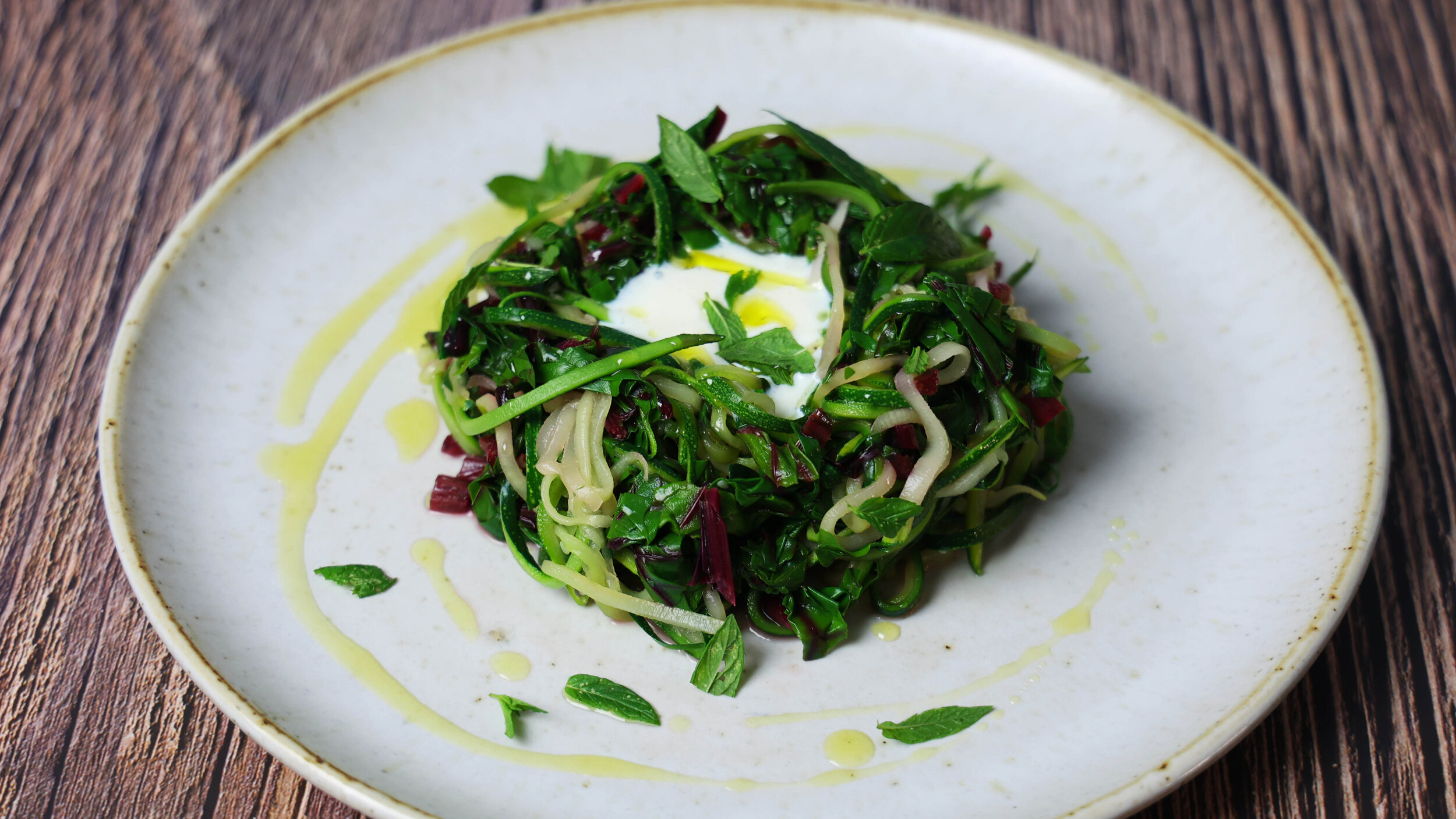Courgette, Mint and Kefir
We’ve all had fun with a spiralizer from time to time. When confronted with a vegetable like courgette, it becomes a question of ‘why not?’ Although it’s not quite the same, if you don’t have a spiralizer but fancy having a crack at this recipe, I also used a julienne peeler and found the results are virtually identical. Courgette noodles are a very quick dish to make and take mere minutes to cook. For this recipe, I also sautéed some fresh beetroot leaves with the courgette as a tasty way to use up this often overlooked ingredient.
For the kefir you have a few options. If your interest lies in its probiotic qualities, then simply add it raw after the noodles are cooked. But it your interested in using it as a cooking ingredient, then add it to a hot pan after sautéing some crushed garlic for 5 minutes as though you’re cooking with cream. For an extra splash of naughtiness, first deglaze the pan with a splash of white wine, dry sherry, cider, vermouth, or lemon juice then reduce by half and add the kefir. For those who aren’t familiar with kefir, it is a fermented milk with a similar tartness of yoghurt but with a lightly cheesy aroma and savouriness. Anybody who chooses to live a plant-based lifestyle, you can also buy / make kefir from milk alternatives too. But more on that in a moment.
To top it off, I decided to stick with the clean, refreshing simplicity of mint, picked straight from the garden. The mint elevates the creamy, savoury, tanginess of the rest of the dish through contrast to it’s aromatic coolness. If it were a painting, it would be a splash of bright blue upon a canvas of oranges and yellows. Anybody else now imagining Van Gogh’s Wheatfield With a Reaper? If not, here:
Image from Artnome.com
By no means am I comparing this recipe to a painting by one of the great masters, but the concept of contrast just popped into my head and painting is a handy language for such things. (Like most chefs, I studied art at school).
Let’s Get Nerdy About Kefir
Kefir is a Russian fermented milk drink made from kefir grains, which are a type of mesophilic symbiotic culture (similar to those that turn milk into cheese). The drink itself is like a thin yoghurt but with a little more cheesiness to it. Kefir grains themselves are a symbiotic matrix of bacteria and yeasts, in a similar way to a scoby.
Image from Wikipedia.
Traditionally, it is fermented at ambient temperatures, where the culture of microorganisms ferment the lactose in a sour, carbonated, mildly alcoholic beverage. During the fermentation, sugars present in milk (lactose) are broken down into lactic acid. This is then broken down further by another bacteria into propionic acid, which happens to be the same fermentation as we find in Swiss cheese). Other components consist of a whole variety of other acids, as well as diacetyl and acetoin, which are responsible for the “buttery” flavour). Add to this the breakdown of proteins into amino acids, and this contributes to kefir’s slightly cheesy tang.
Because of the breakdown in lactose, a lot of people who suffer from lactose intolerance are able to consume the drink with no ill effect.
Much like kombucha, when both yeasts and bacteria are fermenting simultaneously, a small amount of ethanol remains in the drink. Traditionally, this was between 2-3%ABV, but due to short fermentation times in modern industrial practices, this is nearly 0.2-0.3%.
One last little tip, as a reward for those of you who haven’t skipped ahead to the recipe, because kefir contains Lactobacillus bacteria, it can be used to make sourdough bread and as a substitute for buttermilk in breads and cakes, as well as instead of milk or cream in milkshakes, ice cream and gelato.
Courgette, Mint and Kefir Recipe
Serves 2
4 Medium sized courgette, spiralizered (if that’s a word)
6-7 Large, fresh beetroot leaves
1 Shallot, finely diced
2 Cloves are garlic, crushed
300ml Kefir
80ml White wine (or deglazing liquid of your choice)
Fresh mint, as much as you like
Salt
Pepper
Extra virgin olive oil to drizzle
Step 1.
Add the finely diced shallot to a saucepan with a small drizzle of oil. Season it and sauté over a low temperature for 15 minutes, stirring occasionally. Once the shallot is transparent and falling apart, turn the heat up to a medium and deglaze the pan with a splash of wine or dry sherry. Give the liquid 3-4 minutes to reduce, then add the kefir. Stir the contents of the pan to combine, then hold it on the lowest heat until you need it.
Step 2.
Once you’ve turned your courgettes into noodles and crushed your garlic cloves, place a grill pan (or frying pan if you don’t have one) on a very high temperature until it reaches smoking point. You will want to keep a nearby window open and extractor fan on for this. Toss the courgette into the pan with a drizzle of oil, salt and pepper. Toss it around for 30 seconds to 1 minute before adding the crushed garlic. Remove from the heat immediately and serve. To do this bit right, some of the courgette will have just the lightest lick of golden brown by the time the steam has softened the noodles. Any more and the whole lot will turn to mush. If you’re unsure, try a bit, it should almost have a butteriness with a hint of burned aubergine.
Step 3.
To plate up, twist the noodles into a pile around a fork or kitchen tongues and lift it to the plate with a serving soon. Use the back of the spoon to create a bowl in the middle and pour the kefir sauce into it. Lastly, drizzle with the tastiest extra virgin olive oil you can find and tear up some fresh mint by hand.





